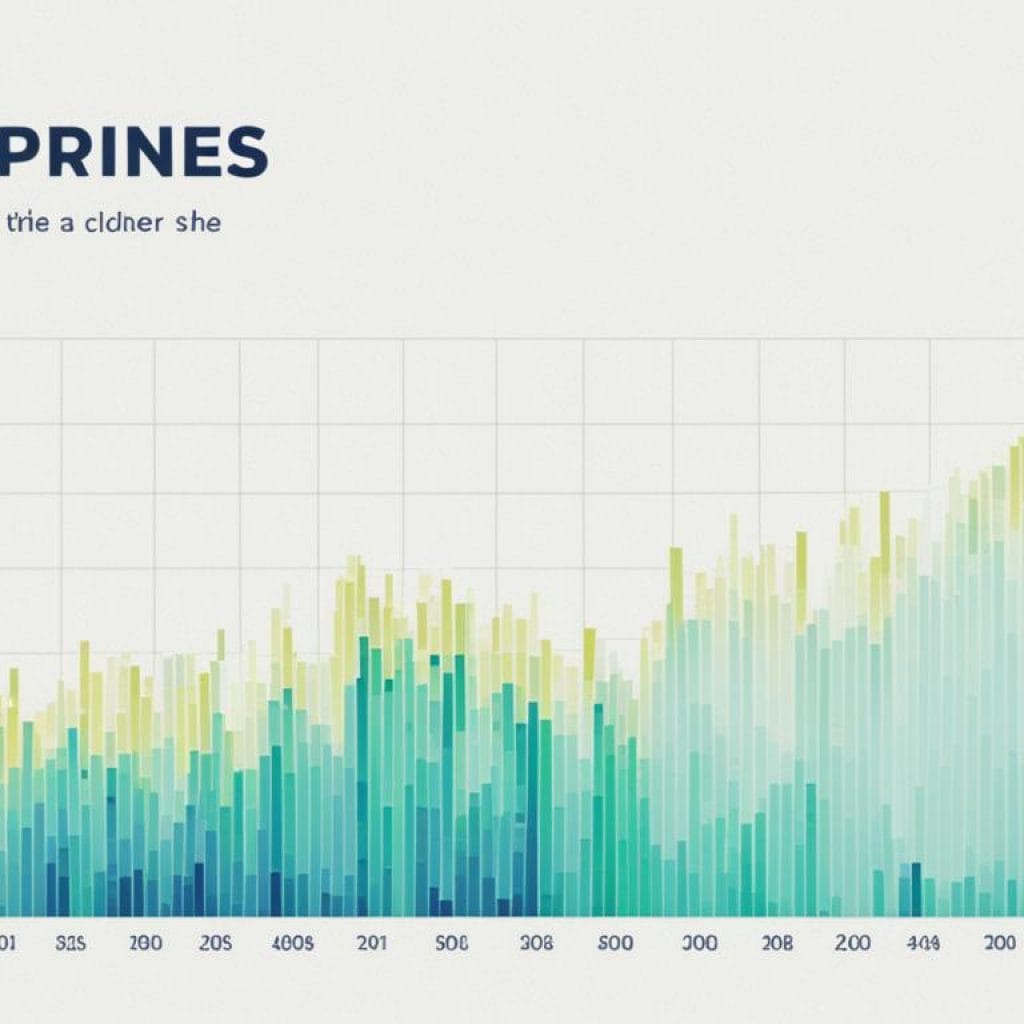Have you ever wondered how tax rates are determined in the Philippines? Are you aware of the different tax brackets and exemptions that apply to individuals and businesses? Discover the intricacies of the tax system and challenge common beliefs as we dive into the world of taxation in the Philippines.
When it comes to taxes, knowledge is power. Understanding the tax rate structure is crucial for individuals and businesses to navigate the complexities of tax compliance, filing, and maximizing savings. From income tax to corporate tax rates, value-added tax to tax exemptions, and everything in between, let’s unravel the intricacies of the tax system in the Philippines.
Key Takeaways:
- Explore the different tax brackets in the Philippines.
- Learn about the various types of income tax and their rates.
- Discover the corporate tax rate and recent changes.
- Understand the implications of value-added tax and its exemptions.
- Uncover essential tax laws, exemptions, and compliance requirements.
Tax Rates for Compensation Income
When it comes to compensation income, resident aliens and non-resident aliens in the Philippines are subjected to different tax rates based on their income brackets. Understanding these tax rates is crucial for accurate tax planning and compliance.
The tax rate for compensation income follows a progressive tax system, which means that higher incomes are taxed at higher rates. The tax rates start at 0% for income up to PHP 250,000 and gradually increase as income increases.
| Income Bracket | Tax Rate |
|---|---|
| Up to PHP 250,000 | 0% |
| PHP 250,001 – PHP 400,000 | 20% |
| PHP 400,001 – PHP 800,000 | 25% |
| PHP 800,001 – PHP 2,000,000 | 30% |
| PHP 2,000,001 – PHP 8,000,000 | 32% |
| Above PHP 8,000,000 | 35% |
As you can see from the table above, the tax rates gradually increase from 0% to 35% depending on the individual’s compensation income. This progressive tax system ensures that individuals with higher incomes contribute a larger share to the tax revenue.
It is important to consult with a tax professional to ensure accurate tax computation and compliance with tax laws and regulations. By understanding the tax rates for compensation income, you can plan your finances more effectively and avoid any potential penalties or legal issues.
Fringe Benefits Tax
One aspect of taxation that employers need to be aware of is the fringe benefits tax. Fringe benefits are additional perks or advantages given to employees on top of their regular salary or wages. These benefits can include items such as company cars, housing allowances, educational assistance, and health insurance.
In the Philippines, fringe benefits provided to managerial and supervisory-level employees are subject to a final fringe benefits tax of 35% in general. This means that employers are required to pay a tax rate of 35% on the grossed-up monetary value of the benefits provided to these employees.
The grossed-up value refers to the total cost to the employer, including any taxes or expenses associated with providing the benefits. By grossing up the value, the tax calculation takes into account the additional costs incurred by the employer.
The fringe benefits tax is paid by the employer on a calendar quarterly basis. It is important for employers to accurately calculate and report the value of the fringe benefits provided to their employees to ensure compliance with tax regulations. Additionally, the tax paid on fringe benefits is deductible as part of the employer’s fringe benefit expense.
Example Calculation of Fringe Benefits Tax
Let’s take an example to illustrate how the fringe benefits tax is calculated:
| Fringe Benefit | Grossed-Up Value | Taxable Fringe Benefit | Fringe Benefits Tax |
|---|---|---|---|
| Company Car | PHP 1,000,000 | PHP 1,000,000 | PHP 350,000 |
| Housing Allowance | PHP 500,000 | PHP 500,000 | PHP 175,000 |
| Total | PHP 1,500,000 | PHP 1,500,000 | PHP 525,000 |
In this example, the employer provided a company car with a grossed-up value of PHP 1,000,000 and a housing allowance with a grossed-up value of PHP 500,000. The taxable fringe benefit is equal to the grossed-up value, and the fringe benefits tax is calculated at a rate of 35%, resulting in a total tax of PHP 525,000 for the two fringe benefits provided.
It is essential for employers to consult with tax professionals or the Bureau of Internal Revenue (BIR) to ensure accurate calculation and timely payment of the fringe benefits tax.

Tax Rates for Income Subject to Final Tax
When it comes to income subject to final tax in the Philippines, the tax rates vary depending on the individual’s engagement in trade or business and their residency status. For resident and non-resident aliens engaged in trade or business within the country, the maximum tax rate on income subject to final tax, including passive investment income, is 20%. On the other hand, for non-resident aliens not engaged in trade or business in the Philippines, the flat rate is 25%.
Understanding the tax rates for income subject to final tax is crucial for individuals and businesses operating in the Philippines. By familiarizing themselves with these rates, they can accurately calculate their tax liabilities and ensure compliance with the tax laws of the country.
Key Points:
- Resident and non-resident aliens engaged in trade or business in the Philippines are subject to a maximum tax rate of 20% on income subject to final tax.
- Non-resident aliens not engaged in trade or business in the Philippines are subject to a flat tax rate of 25% on income subject to final tax.
- Understanding these tax rates is essential for accurate tax planning and compliance.
Tax Rates for Business Income
When it comes to business income, self-employed individuals and professionals in the Philippines are subject to the graduated income tax rates. However, there are alternative tax options available for those with gross sales/receipts and non-operating income below the Value-Added Tax (VAT) threshold. Here’s a breakdown of the tax rates for business income:
Graduated Income Tax Rates
Self-employed individuals and professionals are generally taxed on their net income based on the following graduated tax rates:
| Taxable Income Bracket | Tax Rate |
|---|---|
| Up to PHP 250,000 | 0% |
| Over PHP 250,000 up to PHP 400,000 | 20% of the excess over PHP 250,000 |
| Over PHP 400,000 up to PHP 800,000 | 25% of the excess over PHP 400,000 |
| Over PHP 800,000 up to PHP 2,000,000 | 30% of the excess over PHP 800,000 |
| Over PHP 2,000,000 | 35% of the excess over PHP 2,000,000 |
This progressive tax system ensures that individuals with higher incomes contribute a larger portion of their earnings to taxes.
Alternative Tax Options
For self-employed individuals and professionals with gross sales/receipts and non-operating income below the VAT threshold, there is an alternative tax option available. Instead of the graduated income tax rates, they can choose to be taxed at a fixed 8% tax rate on gross sales/receipts in excess of PHP 250,000. This provides a simplified tax computation and can be more beneficial for those with lower income levels.
Business Tax
In addition to income tax, business income in the Philippines is subject to other taxes, such as the Value-Added Tax (VAT) or the Percentage Tax. The VAT rate is currently set at 12% and is levied on the sale of goods and services and the importation of goods. On the other hand, the Percentage Tax is a flat tax rate of 1% imposed on the gross sales/receipts of certain businesses.
Understanding the different tax rates for business income is essential for self-employed individuals and professionals to make informed decisions about their tax obligations. It’s important to consult with a tax professional or accountant to ensure accurate tax compliance and optimize tax planning strategies.
Corporate Income Tax
Corporate income tax is an important aspect of the Philippine tax system that affects domestic and resident foreign corporations. The corporate income tax rate in the Philippines is currently set at 25%. However, there have been recent developments that impact foreign companies.
Introduced in July 2020, the Corporate Recovery and Tax Incentives for Enterprises Act (CREATE Act) brought about changes to the corporate income tax landscape. Under the CREATE Act, foreign companies can enjoy a reduced corporate income tax rate of 25% from 2020 to 2022.
But that’s not all. The CREATE Act also outlines a progressive reduction in the corporate income tax rate for foreign companies. The rate will be reduced by one percent per year, with the aim of reaching a rate of 20% by 2027 for foreign corporations. This reduction in the corporate income tax rate is part of an effort to attract more foreign investments and boost economic growth in the country.
The reduced corporate income tax rate provided by the CREATE Act is a significant incentive for foreign companies considering expanding their operations in the Philippines. It offers a competitive advantage and can contribute to a favorable business environment, helping businesses thrive and increase their contribution to the economy.
Here is a summary table showcasing the corporate income tax rates in the Philippines:
| Year | Domestic and Resident Foreign Corporations | Foreign Corporations |
|---|---|---|
| Up to 2022 | 25% | 25% |
| 2023 | 25% | 24% |
| 2024 | 25% | 23% |
| 2025 | 25% | 22% |
| 2026 | 25% | 21% |
| 2027 onwards | 25% | 20% |

This image provides a visual representation of the corporate income tax rates and the gradual reduction outlined by the CREATE Act. It underscores the progression towards a more attractive tax environment for foreign corporations.
By implementing the CREATE Act and offering tax incentives, the Philippines aims to attract more foreign investments, promote business growth, and ultimately stimulate the economy. It’s an exciting time for foreign companies considering expanding their presence in the country.
Withholding Tax Rates
When it comes to taxation in the Philippines, it’s essential to understand the different withholding tax rates for various types of income. This section will cover the rates for dividend withholding tax, interest withholding tax, and royalty withholding tax.
Dividend Withholding Tax
Dividends distributed by resident companies are subject to withholding tax, which is deducted by the company before the distribution of dividends to shareholders. The withholding tax rate for residents is 25%, while non-residents have a withholding tax rate of 15%. However, for non-resident recipients to enjoy the 15% withholding tax rate, their country of residence must allow a tax credit of 15%. This ensures fair and equitable taxation for both residents and non-residents.
Interest Withholding Tax
When non-residents receive interest payment from Philippine sources, it is subject to a withholding tax. The withholding tax rate for interest paid to non-residents is 20%. This withholding tax ensures that the appropriate tax amount is withheld at the source, simplifying the taxation process for non-resident individuals or entities earning interest income in the Philippines.
Royalty Withholding Tax
Similar to interest payments, royalty payments made to non-residents are also subject to withholding tax. The withholding tax rate for royalty payments is 25%. This tax ensures that the appropriate tax amount is withheld when royalty income is paid to non-residents, promoting tax compliance and fairness in the taxation of intellectual property rights and the use of intangible assets.
To summarize, the withholding tax rates in the Philippines for different types of income are as follows:
| Type of Income | Withholding Tax Rate |
|---|---|
| Dividends | 25% for residents, 15% for non-residents (if non-resident recipient’s country allows a tax credit of 15%) |
| Interest | 20% for non-residents |
| Royalties | 25% for non-residents |
Understanding these withholding tax rates is crucial for individuals and businesses involved in dividend distributions, interest payments, and royalty transactions. By complying with the withholding tax obligations, both residents and non-residents can contribute to the country’s tax revenue and ensure a fair and equitable tax system.
Personal Income Tax Rates
Understanding the personal income tax rates in the Philippines is crucial for individuals looking to manage their finances and plan their tax obligations effectively. The progressive tax system ensures that individuals with higher incomes pay a greater proportion of their earnings in taxes. Let’s take a closer look at the personal income tax rates and recent developments impacting taxpayers.
Tax Reduction under the TRAIN Act
The Tax Reform for Acceleration and Inclusion (TRAIN) Act, implemented to promote tax fairness and simplicity, has brought notable changes to the personal income tax rates. Under the TRAIN Act, tax reductions were implemented for most taxpayers, resulting in a fairer and more balanced tax system.
The Tax Reform program aimed to provide relief to Filipino individuals, especially those with lower to moderate incomes. While the highest income bracket remains subject to the previous tax rates, taxpayers earning below PHP 8 million have experienced a reduction in their tax rates.
Starting from January 1, 2023, taxpayers falling below the PHP 8 million income threshold will witness a reduction in their tax rates. This adjustment ensures that individuals who earn less have a lighter tax burden, allowing them to allocate more of their hard-earned money towards their financial goals and investments.
Additionally, the TRAIN Act has introduced other improvements to the tax system, such as the increase in the non-taxable 13th-month pay and other bonuses, the adjustment of the income tax brackets, and the introduction of value-added tax (VAT) exemptions for low-income earners.
Overview of Progressive Tax Rates
The personal income tax system in the Philippines operates on a progressive rate structure, which means that higher-income earners are subjected to higher tax brackets. The tax rates range from 0% to a maximum of 35%, depending on the individual’s taxable income.
| Taxable Income Range | Tax Rate |
|---|---|
| Up to PHP 250,000 | 0% |
| PHP 250,001 – PHP 400,000 | 20% |
| PHP 400,001 – PHP 800,000 | 25% |
| PHP 800,001 – PHP 2,000,000 | 30% |
| Above PHP 2,000,000 | 35% |
It’s important to note that these rates are subject to change based on government policies and legislation. Taxpayers should stay informed about any updates or amendments to ensure accurate tax planning and compliance.

“The reduction in personal income tax rates under the TRAIN Act is a significant step towards achieving a fairer and more progressive tax system in the Philippines.” – Finance Secretary, Carlos G. Dominguez III
By understanding the personal income tax rates and the recent tax reduction initiatives brought about by the TRAIN Act, individuals can make informed financial decisions and ensure compliance with the tax laws. It is advisable to consult with tax professionals or seek guidance from the Bureau of Internal Revenue (BIR) for personalized advice and to stay up-to-date with any changes that may impact their tax obligations.
Value-Added Tax (VAT)
In the Philippines, most goods and services are subject to a 12% value-added tax (VAT). The VAT is an indirect tax that is added to the selling price of goods and services at each stage of production and distribution.
VAT Rate
The standard VAT rate in the Philippines is 12%. This rate applies to most goods and services, including but not limited to:
- Consumer goods
- Professional services
- Imported goods
The VAT rate is imposed on the selling price of these items and is usually included in the total price paid by the consumer.
VAT Exemption
However, certain goods and services are exempt from VAT. The VAT exemption covers a wide range of items, including:
- Medical services and related goods
- Domestic transport services
- Education services
- Exported goods
These exempt items do not carry a VAT charge, allowing consumers and businesses to purchase them without incurring the additional tax cost.
VAT for Exporters
Exporters in the Philippines enjoy a VAT exemption for their local purchases of goods and services. This exemption is in place to support and incentivize export-oriented industries in the country.
The VAT exemption for exporters can be availed for a maximum of 17 years for registered exporters. This allows exporters to reduce their production costs, making their products more competitive in the international market.
| VAT Rate | VAT Exemption | VAT for Exporters |
|---|---|---|
| 12% | Certain goods and services | Local purchases of goods and services |
Residence and Source of Income
Understanding the concept of residence and source of income is essential in comprehending the Philippine tax system. Different tax requirements apply to resident citizens and non-resident citizens, as well as resident and non-resident aliens.
Resident citizens are individuals who are considered tax residents of the Philippines. They are subject to tax on their worldwide income, which includes both income earned domestically and abroad.
On the other hand, non-resident citizens, including resident and non-resident aliens, are only taxed on income derived from Philippine sources. This means that if you are a non-resident citizen or alien and earn income outside of the Philippines, you are not required to pay tax on that income.
The determination of residency status for tax purposes depends on several factors, including the duration and purpose of physical presence abroad, intention to reside abroad permanently, and the nature of stay in the Philippines. It is crucial to establish your residency status correctly to ensure proper compliance with tax regulations.
To illustrate the difference, here’s a simple breakdown:
| Resident Citizens | Non-Resident Citizens and Aliens |
|---|---|
| Taxable on worldwide income | Taxable only on income from Philippine sources |
| Subject to progressive tax rates | Subject to specific tax rates |
| Required to file annual income tax returns | May be exempt from filing if no Philippine-sourced income |
Residence and source of income play a crucial role in determining your tax obligations in the Philippines. Ensure you understand the implications and consult with a tax professional if needed.
Income Subject to Tax
In the Philippines, taxable income encompasses various types of income, including gross income, compensation income, business income, and investment income. Each type of income has different rules and rates that apply. Understanding the classification of income is essential for accurate tax filing and compliance.
Types of Income
- Gross income: Gross income refers to the total income earned by an individual or business before any deductions or expenses. This includes income from all sources, such as wages, salaries, rent, dividends, and interest.
- Compensation income: Compensation income refers to income received by individuals for services rendered, such as salaries, wages, bonuses, commissions, and other benefits. It includes both cash and non-cash compensation.
- Business income: Business income refers to the income derived from conducting trade or business activities, such as profits from self-employment, professional fees, rental income, and sales of goods or services.
- Investment income: Investment income includes income generated from investments, such as interest income, dividends, capital gains from the sale of stocks or real estate, and royalty income.
Types of Income and Tax Rates
| Type of Income | Tax Rate |
|---|---|
| Gross income | Determined based on specific tax rules and rates for each income type. |
| Compensation income | Subject to progressive tax rates based on income brackets. |
| Business income | Subject to graduated income tax rates or alternative tax options like the 8% flat rate for sales/receipts exceeding PHP 250,000. |
| Investment income | Tax rates vary depending on the type of income, such as dividends, interest, capital gains, and royalties. |
Understanding the different types of income subject to taxation is essential for individuals and businesses to accurately calculate their tax liability and ensure compliance with Philippine tax laws. Sufficient knowledge of tax rules and rates specific to each income type will enable taxpayers to fulfill their obligations efficiently and effectively.
Taxation of Capital Gains
When it comes to capital gains in the Philippines, they are considered part of an individual’s taxable income and subject to taxation at regular rates. However, the tax treatment for capital gains varies depending on two key factors: the holding period of the asset and the type of asset.
For instance, when you sell real estate property, a final tax of 6% is imposed on the capital gains. On the other hand, if you sell shares in unlisted domestic corporations, the capital gains are taxed at a rate of 15%. It’s important to keep these rates in mind when considering real estate sales or stock sales.
Understanding the tax implications of capital gains can help you make informed decisions regarding your investments and ensure compliance with the relevant tax regulations. Here is a summary of the taxation rates for capital gains:
| Asset Type | Tax Rate |
|---|---|
| Real Estate Sales | 6% |
| Stock Sales (Unlisted Domestic Corporations) | 15% |
The image above illustrates the concept of capital gains tax and its impact on individuals engaged in real estate sales or stock sales.
Conclusion
Understanding the taxation system and tax rates in the Philippines is essential for individuals and businesses alike. By familiarizing themselves with the intricacies of the tax system, taxpayers can ensure tax compliance and accurate filing.
The tax rates in the Philippines vary depending on the type of income and the taxpayer’s residency status. Whether it is compensation income, income subject to final tax, or business income, knowing the applicable rates is crucial for proper tax planning and reporting.
Moreover, tax compliance is not limited to understanding the tax rates. It also involves adhering to the tax laws and regulations set forth by the authorities. By staying updated with the latest tax laws and diligently fulfilling their tax obligations, taxpayers can navigate the taxation system with confidence and ease.
Overall, a solid understanding of the taxation system, familiarity with the relevant tax rates, and a commitment to tax compliance are indispensable for individuals and businesses in the Philippines. By embracing these principles, taxpayers can fulfill their obligations and contribute to the development of the nation.


















Add comment